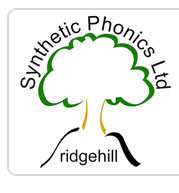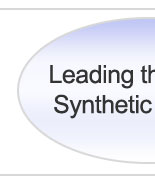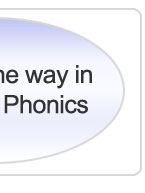|
The Sound Discovery® programme and the Snappy Lesson® method of teaching were developed through personal research and are backed up by achievements in schools. This is described in the downloadable papers shown below.
Please also see Independent Reports below for government papers and independent Wave 3 Trials of Sound Discovery® and Snappy Lesson®.
1. (2014) Longitudinal Study from Reception to Year 2 (2010-2013) and Summary of an earlier Longitudinal study from Reception to Year 6 (1997-2004). The Effects of a Systematic Synthetic Phonics Programme on Reading, Writing and Spelling – with whole classes of children who started with the programme for first-time teaching in Reception (aged four to five years) and received small group teaching with the same programme for catch-up as required.
The 2010-2013 follow-up study on the effects of Sound Discovery® from Reception to Year 2 found that Year 2 children built on their flying start in Reception and Year 1. The aim of the study was to demonstrate how all children in a class can become fluent readers by the age of seven years, and how disadvantaged children and struggling learners can overcome their difficulties to become confident and enthusiastic readers who love books.
The whole Year 2 class were 28 months above chronological age for reading and 21 months ahead for spelling. Children in vulnerable groups made strong progress and no child achieved less than average reading or spelling for their age. Boys were the most impressive group at 36 months ahead for reading and 27 months ahead for spelling.
The whole class achieved above average national expectations for reading and writing at the end of Key Stage 1 in standardised assessment tests (KS1 SATs, 2013): Level 2+ Reading 96%, Level 2+ Writing 100% (compared with national figures for England of 87% and 83% respectively). This shows that the children could read running text for meaning as well as decode isolated words. SATs clearly involve comprehension. On top of this are the very good KS1 writing results.
The other Grant study (1997-2004) summarised in this paper aimed to show how all children can leave primary school (aged eleven years) well equipped for the literacy demands of their secondary education. Children who started with Sound Discovery® in Reception for first-time teaching and catch-up as necessary, went on to achieve above national expectations for reading and writing throughout their primary schooling to the end of Key Stage 2, in their KS1 and KS2 SATs, equipping them for a more successful secondary transfer. Boys’ writing was particularly successful. Whole cohort of three classes - KS2 English SATs (2004): Level 4+ 94%, Level 5 65% (compared with national figures for England of 77% and 26% respectively).
The studies demonstrated how children from low-income and other disadvantaged families and struggling learners can overcome their difficulties and how literacy teaching and targeted interventions with Sound Discovery® can be effective and have a long-lasting impact, without being expensive.
View the report here
2. (2014) Sound Discovery®- A cost effective, evidenced based approach …
View the article here
3. (2012) Follow-up Study from Reception to Year 1 (2010-2012) and Summary Report of an earlier Longitudinal Study (1997-2004) – The Effects of a Systematic, Synthetic Phonics Programme on Reading and Spelling paper.
This follow-up study on the effects of Sound Discovery® from Reception to Year 1 found that Year 1 children built on their flying start with reading and spelling in Reception. They read with confidence and enthusiasm and all the children in the catch-up groups were at least average in their achievements. Children in vulnerable groups also made a very strong start. Children were reading more fluently which encouraged a love of books. The whole class were 22 months ahead of chronological age for reading and 21 months ahead for spelling. Boys were the most successful at 25 months ahead for reading and 26 months ahead for spelling. No child was reading or spelling below an average level for their age.
View the report here
4. (2011) “Matched Funding for Teaching Phonics – Opportunity or straightjacket?” paper.
This paper reports on using Sound Discovery® with a whole class of Reception children. The paper asked, “Is this an opportunity to improve standards or a straightjacket that will ‘switch off’ children from a love of reading books?” The study found it was a brilliant opportunity to drive up reading standards for all children in the class including vulnerable groups. There was no evidence to indicate that such phonics teaching ‘switched off’ children. The children picked up reading quickly and became confident and enthusiastic readers. Early strugglers closed their gap with both reading and spelling. The Reception class was 14 months ahead of chronological age for reading and 12 months ahead for spelling.
View the report here
5. (2005) Accelerated Reading and Writing with Synthetic Phonics and Virtual Elimination of the "Tail of Underachievement": A Seven Year Longitudinal Study.
A longitudinal study which tracks children’s literacy progress with the Sound Discovery® synthetic phonics programme, from ages 4-11 years – to 2004 SATs results.
Accelerated reading and writing
6. (2004) Raising literacy attainment of all pupils in a mainstream primary setting with particular reference to boys’ writing - a seven year Longitudinal Study.
A longitudinal study which tracks children's literacy progress with the Sound Discovery® synthetic phonics programme, from ages 4 - 11 years – to 2003 SATs results. The advances made by boys in their writing were remarkable. Raising literacy attainment
7. (2002) How does Sound Discovery® match up to “The Prototype” of a good literacy instruction programme?
Sound Discovery
8. Feedback from Schools using Sound Discovery® and Snappy Lesson®
Snappy Lesson results
9. All children can learn to read and spell with Sound Discovery®
The English equivalent of the Clackmannanshire study.
All children paper
Independent Reports
10. (2013) Greg Brooks (2013) in What works for children and young people with literacy difficulties? The effectiveness of intervention schemes. 4th Edition
Greg Brooks reported that Sound Discovery® was used in South Gloucestershire as a Wave 1 programme and therefore was not analysed in his report. He acknowledged that extensive data had been gathered there over ten years. He also reported on the use of Sound Discovery® as a catch-up programme in Norfolk and in a large middle school in Bedfordshire in 2005-2007. The Norfolk study found substantial gain for comprehension and the Bedfordshire study found useful progress in spelling with Year 5 and Year 6 pupils. Sound Discovery® was one of the top 20 most effective literacy interventions, according to this report.
The report can be downloaded at the following web address:
http://www.interventionsforliteracy.org.uk/widgets_GregBrooks/What_works_for_children_fourth_ed.pdf
11. (2010) Summary of Results of Local Authority Wave 3 Intervention Studies using Sound Discovery, 2003-2010.
Table of results
This table summarises the details and results from the Wave 3 Intervention Studies presented in sections 12, 13, 14, 17, 18 and 20 below. It includes the year groups, the number of pupils and the number of schools involved in each study as well as the period of intervention and ratio gains achieved in reading accuracy and spelling.
12. (2010) “Good impact for the Sound Discovery® programme from reported data” in Wiltshire in 2010
Results of the Wiltshire Sound Discovery® Wave 3 Project March 2009 to March 2010
This summary is reproduced with the kind permission of Sarah Couzens, Senior Advisory Teacher, Wiltshire Learning Support Service.
• From Y2 – Y 3 (ages 7 to 8 years)
• 70 pupils, a minimum of 2 years behind peers in reading, 12 schools
• 9-12 weeks
• Average Ratio Gains:
◦ Reading 3.1
◦ Spelling 1.4**
** 1.4 was the ratio gain deemed appropriate for a Wave 3 intervention to be considered ‘educationally significant’ (see p 30, What words for pupils with literacy difficulties, DCSF, 2007).
13. (2009) “Good impact for the Sound Discovery® programme” in Wiltshire in 2009
Sound Discovery® Wave 3 Project November 2008 – March 2009, undertaken by Wiltshire Learning Support Services
This summary is reproduced with the kind permission of Sarah Couzens, Senior Advisory Support Teacher, Wiltshire Learning Support Service.
• From Y2 – Y3 (ages 7 to 8 years)
• 52 pupils a minimum of 2 years behind peers in reading, 11 schools
• 9 – 12 weeks
• Average Ratio Gains:
◦ Reading 2.9
◦ Spelling 1.9
** 1.4 was the ratio gain deemed appropriate for a Wave 3 intervention to be considered ‘educationally significant’ (see p 30, What words for pupils with literacy difficulties, DCSF, 2007).
14. (2008) “Positive findings for children’s reading and spelling (with 65% of 46 pupils making double the rate of expected progress)” in Wiltshire in 2008.
This report on the Sound Discovery Trial is reproduced with the kind permission of Sarah Couzens, Senior Advisory Support Teacher, Wiltshire Learning Support Service.
A report of the Sound Discovery® Trial Feb-July 2008, undertaken by Wiltshire Learning Support Service
Some additional point were noted:
• “all schools felt the Sound Discovery® resources were easy to follow and the Snappy Lesson® structure was helpful for those responsible for delivering the programme”
• “skills learned through this intervention are highly transferrable to the classroom setting and may be applied to any reading or writing activity”
• From Y3 – Y5 (ages 8 to 10 years)
• 46 pupils, 13 schools
• 3 to 4 months
• Average Ratio Gains:
◦ Reading 3.7
65% pupils 2 –10
◦ Spelling 1.9
50% pupils 1.4 – 7.3 **
60% pupils 2 or above
** 1.4 was the ratio gain deemed appropriate for a Wave 3 intervention to be considered ‘educationally significant’ (see p 30, What words for pupils with literacy difficulties, DCSF, 2007.
15. (2006) Government "Independent Review of the Teaching of Early Reading" - Final Report. Jim Rose. March 2006.
The long-awaited and much heralded report into the teaching of early learning by Jim Rose was released in 2006. It was the main story on a large number of news channels when it was first published. The report's main recommendation was that synthetic phonics should be adopted nationally from September 2006.
The Rose Report (2006) can be downloaded from the following government web address:
http://media.education.gov.uk/assets/files/pdf/i/independent%20review.pdf
16. (2005) House of Commons Education and Skills Committee "Teaching Children to Read" Evidence Pages 105 to 118; and 124 to 125.
A successful trial of Sound Discovery® was reported to the House of Commons Education and Skills Committee by Sarah Seymour, an Advisory Support Teacher for the Norfolk LEA. Her findings are contained in this House of Commons Committee report. The Sound Discovery synthetic phonics literacy programme was tested in the Spring of 2004. The trial was carried out at North Elmham Primary School, Norfolk in consultation with the Cognition and Learning Team of the Norfolk Psychology Service. The programme was found to be effective, economical, motivating, user friendly and non- age specific.
Also in this report, Jennifer Chew, OBE, a recognised authority in the teaching of literacy, discussed the advantages of adopting synthetic phonics and cited as evidence the Johnson and Watson study in Scotland and the Grant study in England, both of which followed children to the end of their primary education. She reported that both these studies produced better short- and long-term results than NLS methods.
The report is published by authority of the House of Commons and is available from The Stationery Office or can be downloaded from the following government web address:
http://www.publications.parliament.uk/pa/cm200405/cmselect/cmeduski/121/121.pdf
Evidence Pages 105 to 118 can be found at pages 151-164 of this pdf document. Evidence Pages 124 to 125 can be found at pages 170 and 175 of the pdf document of the same report. Marlynne Grant is the originator of the Sound Discovery® programme.
17. (2005) "Some exceptional results obtained from the independent Sound Discovery trial
conducted by Norfolk County Council"
Wave 3 Intervention using Sound Discovery®-Norfolk County Council Trial 2005
This report is reproduced with the kind permission of Jacqui Worsley, Senior Advisory Support Teacher, Educational Psychology and Specialist Support, Children's Services.
Wave 3 Intervention using Sound Discovery®-Norfolk County Council Trial 2005
• From Y2-Y8 (ages 7 to 13 years)
• 47 pupils, 13 schools
• 12 weeks
• Average Ratio Gains:
◦ Reading 1.8 - 5.3
◦ 66% of pupils 2 - 8
◦ Spelling 1.4 – 3.2 **
◦ 56% of pupils 2 – 4.7
** 1.4 was the ratio gain deemed appropriate for a Wave 3 intervention to be considered ‘educationally significant’ (see p 30, What words for pupils with literacy difficulties, DCSF, 2007.
18. (2004) A Report of the Wave 3 Literacy Intervention Trial in four Bath and North East Somerset schools 2004. Published by Bath and North East Somerset LEA
The following successes were reported: -
• Average ratio gain for reading of 3.1
• Individual ratio gains for spelling
• Improvement in National Curriculum writing levels
• Increased skills, enthusiasm, motivation, independence and self-esteem of children
• Removal of barriers to learning for children with a wide range of SEN
• School staff reported increased confidence in meeting the needs of children
Wave 3 Intervention using Sound Discovery®-BANES Local Authority Trial 2004
• Year 3 (ages 7 to 8 years)
• 18 pupils, 4 schools
• Vertical grouping
• 20 weeks
• Average Ratio Gains:
◦ Reading 3.1
◦ Spelling 0.9:
19. (2004) Ofsted. "Reading for purpose and pleasure" December 2004. An evaluation of the teaching of reading in primary schools.
This Ofsted survey was undertaken:
- "to identify reasons for the wide range of attainment in reading among primary-aged pupils.
- to disseminate schools’ effective practice in reducing underachievement and developing pupils’ positive attitude to reading.
- to describe key features of the successful teaching of reading."
The report includes a case study of early intervention based on the Snappy Lesson®:
“The SEN Co-ordinator took the key role in the teaching of phonics and in providing related training for all staff. The lessons lasted for around 20 minutes in Year R (Reception) and 25 minutes in Year 1. They were held mostly during registration periods twice or three times a week. Intervention was used in Years 3 and 4 to teach more advanced spelling strategies.” The case study concludes that, ”the SEN Co-ordinator’s work had a positive impact on the standards achieved at the end of Key Stages 1 and 2. The proportion of pupils on the SEN register had fallen each year since 1998, even though the percentages of pupils eligible for FSM remained fairly constant. In 2003, the test results for reading at Key Stage 1 showed, for the first time in several years, virtually no difference between the attainments of boys and girls. This was also reflected in attainment in reading at Key Stage 2.”
The survey report is published by the Ofsted Publications Centre (document reference number HMI 2393).
Email: freepublications@ofsted.gov.uk
Website: www.offsted.gov.uk
20. (2003) Sound Discovery® Programme at North Elmham Primary School (Norfolk) - A report of the Trial Published by Norfolk LEA.
The main aims of the trial were to evaluate the impact that Sound Discovery has on reading, writing and motivation, and also the feasibility of its implementation within a small rural school. The "rule of thumb" advocated by the DfES, of a ratio gain of 'at least double the normal rate of progress' (DfES 2003) was satisfied in this trial. It was seen by North Elmham School as a cost effective intervention “cheap and easy to introduce, economical in terms of time, all combined in a multi-sensory, easy to use, hands on package.”
Wave 3 Intervention using Sound Discovery®-North Elmham Trial 2003
• From YR to Y6 (ages 4 to 11 years)
• 17 pupils, 1 school
• Vertical grouping
• 10 weeks
• Average Ratio Gains:
◦ Reading 3.8
◦ Spelling 2.7
21. Secondary Wave 3 Intervention using Sound Discovery with Year 7 pupils
The school conducted and reported these findings. This secondary Wave 3 intervention with 20 Year 7 pupils raised reading and spelling levels from no measurable score at the beginning of Year 7 to post-test scores in the 8:05 to 10:05 years range for reading and above that for spelling, in 28 weeks. Ratio gains were in the range 5.9 to 9.3 for reading and greater than this for spelling.
View table of results here
22. Curee synthesis of Sound Discovery® research
Curee is an internationally acknowledged centre of expertise in evidence-based practice in all sectors of education.
View the report here
|


 Validated 2022
Validated 2022
